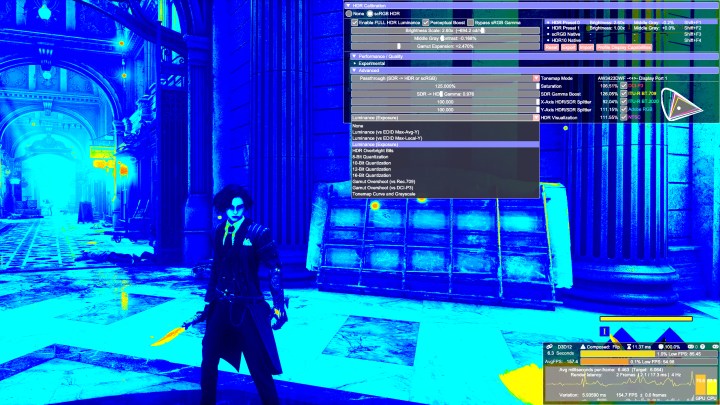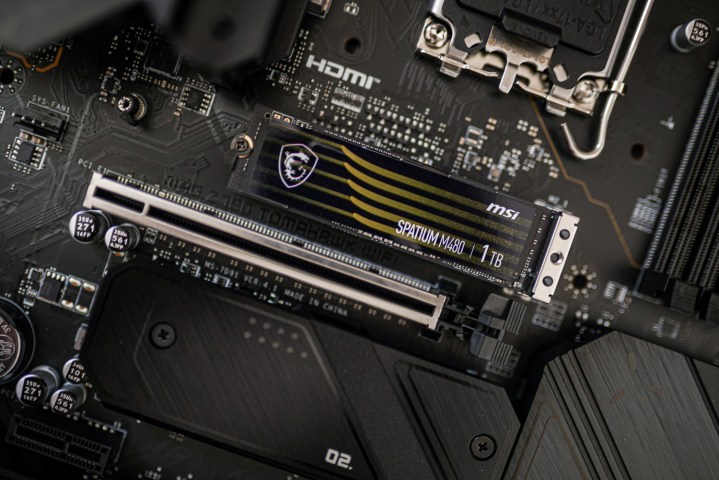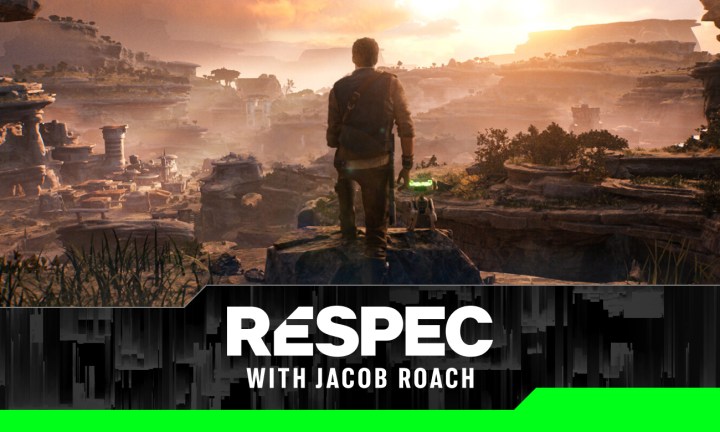PC ports need to be better in 2024. Here’s how
I’ve said it once, and I’ll saw it again: 2023 wasn’t a great year for PC gaming. We saw some excellent games, but most were marred by poor ports that exhibited performance issues, bugs, and other game-breaking problems. Even at the end of the year, though, things are looking up, and I hope that trend continues into 2024.
Rather than rehashing the performance issues we’ve seen on PC all year, I want to look forward. Here are the five things I want to see out of PC releases next year.
GPU decompression
There were a few common threads across PC ports in 2023, but one of the most prominent was the lack of GPU decompression. As I’ve written about previously, the Xbox Series X and PS5 have dedicated decompression hardware, which equals the computational power of almost a full CPU. PCs don’t have a dedicated decompression processor, but you can offload some of that work to the GPU.
We’ve heard about Microsoft’s DirectStorage, which is currently available in Ratchet and Clank Rift Apart with GPU decompression. In addition, Nvidia has its RTX IO feature, which we saw vastly improve loading times in the demanding Portal Prelude RTX.

Faster loading times are great, but the real advantage of GPU decompression is the IO bottleneck you can see in some PC games. If the GPU decompresses assets, that takes some strain off of the CPU. In titles like Star Wars Jedi: Survivor, which poorly scale across the high thread count available on modern CPUs, getting past the IO bottleneck can help reduce traversal stutter that’s caused by invisible loading zones.
Here’s how Nvidia explains it: “RTX IO alone cannot completely remove stutter, but it can be an aiding technology to help reduce stuttering. It can do so by scaling down the dependence on CPU compute when the need to load textures and geometries ‘faster’ is the cause of stuttering, and freeing up the CPU to work on other tasks.”
Frame gen for all

I’m tired of the DLSS 3 and FSR 3 debacle. Every major AAA release should include the latest upscaling and frame generation tools from Nvidia and AMD. If you’re going to include one, you must include the other. There’s really no excuse at this point. Within a week of AMD releasing the source code for FSR 3, modders created a tool that could utilize FSR 3 in any game that already had DLSS 3.
Frame generation is important, but we saw a nasty dynamic between FSR and DLSS this year overall. Starfield was probably the worst example, with the game only supporting FSR at release despite cries from the community for a DLSS version (a DLSS mod released within a day of the game’s launch). We’ve seen over and over again that DLSS and FSR largely use the same backbone, so to add one to a game and not the other doesn’t make any sense.
As we’ve seen with games like Starfield and Alan Wake 2, upscaling and sometimes even frame generation are essential tools for getting the best performance in demanding titles. Supporting FSR, DLSS, and even Intel’s XeSS ensures that players can get the best experience regardless of the GPU they own, and that should be a top priority for any major PC release.
Proper HDR

I love the Special K utility I have running on nearly every PC game I play — make sure to read how the “Swiss Army Knife” app transformed my setup — but it’s a solution that doesn’t need to exist. I mainly use it to inject HDR in games that don’t have a proper implementation, and as most PC gamers know all too well, that’s most PC games.
HDR has been on the backburner for PC gaming for years, and for good reason. We haven’t had the displays that can truly make an HDR experience shine on the desktop. That changed this year, and it’s time PC ports started paying attention to the HDR experience that console players have enjoyed for the past several years.
Any HDR implementation is better than none at all, but ideally, the game will support different HDR formats and come with sliders for peak luminance, saturation, and midpoint. Cyberpunk 2077 is a prime example of HDR done right in a game, and I hope more releases in 2024 apply that format.
While we’ve mostly seen a swatch of VA and IPS panels with disappointing brightness in years past, we’re seeing many more gaming monitors built for HDR. OLED panels like the LG UltraGear OLED 27 are fantastic for HDR, but we’re also seeing an influx of mini-LED displays like the Cooler Master Tempest GP27Q. Now, we’re just waiting on proper HDR support in the games themselves, and I hope to see more of that in 2024.
SSD required

There was a bit of an outcry this year over some system requirements. In particular, games like Starfield, Diablo 4. and Cyberpunk 2077: Phantom Liberty list an SSD as a requirement to run the game. This, apparently, came as a shock to some PC gamers (and even some journalists) who think that a modern AAA release should be able to run on storage tech that debuted in 1992.
We’ve seen a few examples of the horrors of using a spinning hard drive in a game designed for an SSD, with Ratchet and Clank Rift Apart being the most prominent example. I appreciate developers holding onto HDDs to skirt the ire of PC gamers, but it’s time. We need to move on to requiring an SSD for modern AAA games.
Don’t misunderstand what I’m saying here. HDDs don’t need to go away entirely, and if a game can run on an HDD without problems, that’s great. However, we’re in a time when the cost of a 1TB or 2TB SSD is roughly the same as a high-quality HDD of the same size, so games shouldn’t focus on supporting storage tech that’s well past its prime. Furthermore, with features like RTX IO and DirectStorage, an SSD is required to get the most out of this IO tech.
More Vulkan

This is less about optimizing PC games and more about broadening support. I hope we see more Vulkan next year. I’ve written about previously the advantages of Vulkan over DirectX, including occasional performance improvements, but the main draw of Vulkan is that it works across multiple platforms. DirectX only works on Windows. Vulkan works on Windows, MacOS, and Linux.
The majority of PC gaming happens on, well, a PC, but that’s changing. Devices like the Steam Deck now give Linux a larger slice of the PC gaming pie, and recent Macs are powerful enough to run games like Baldur’s Gate 3 — a game that, for the record, supports both Vulkan and DirectX. You see that a lot. Games like Red Dead Redemption 2 and Doom Eternal are easy to get working on Steam Deck because they use Vulkan.
The scope of PC gaming is only getting broader, and Windows is no longer the single destination for playing games. Vulkan ensures that games can run on different operating systems without fancy translation layers that can bring up a slew of issues. Ideally, we’ll see games that support DirectX and Vulkan. It’s certainly possible, as titles like Red Dead Redemption 2 and Baldur’s Gate 3 demonstrate.
PC ports in 2024
2023 wasn’t a great year for PC gaming, and I’m sure we’ll still see plenty of problematic PC ports next year. However, the games we saw in the latter half of this year were certainly better than those released in the first half, and that makes me hopeful that the stability of PC ports is on an upward trend.
There are still techniques like pre-compiling shaders that PC ports need, but I hope that the solutions we saw for problems in 2022 will become the norm in 2024. That’s certainly what we saw throughout the last year.
Editors’ Recommendations

I’ve said it once, and I’ll saw it again: 2023 wasn’t a great year for PC gaming. We saw some excellent games, but most were marred by poor ports that exhibited performance issues, bugs, and other game-breaking problems. Even at the end of the year, though, things are looking up, and I hope that trend continues into 2024.
Rather than rehashing the performance issues we’ve seen on PC all year, I want to look forward. Here are the five things I want to see out of PC releases next year.
GPU decompression
There were a few common threads across PC ports in 2023, but one of the most prominent was the lack of GPU decompression. As I’ve written about previously, the Xbox Series X and PS5 have dedicated decompression hardware, which equals the computational power of almost a full CPU. PCs don’t have a dedicated decompression processor, but you can offload some of that work to the GPU.
We’ve heard about Microsoft’s DirectStorage, which is currently available in Ratchet and Clank Rift Apart with GPU decompression. In addition, Nvidia has its RTX IO feature, which we saw vastly improve loading times in the demanding Portal Prelude RTX.

Faster loading times are great, but the real advantage of GPU decompression is the IO bottleneck you can see in some PC games. If the GPU decompresses assets, that takes some strain off of the CPU. In titles like Star Wars Jedi: Survivor, which poorly scale across the high thread count available on modern CPUs, getting past the IO bottleneck can help reduce traversal stutter that’s caused by invisible loading zones.
Here’s how Nvidia explains it: “RTX IO alone cannot completely remove stutter, but it can be an aiding technology to help reduce stuttering. It can do so by scaling down the dependence on CPU compute when the need to load textures and geometries ‘faster’ is the cause of stuttering, and freeing up the CPU to work on other tasks.”
Frame gen for all

I’m tired of the DLSS 3 and FSR 3 debacle. Every major AAA release should include the latest upscaling and frame generation tools from Nvidia and AMD. If you’re going to include one, you must include the other. There’s really no excuse at this point. Within a week of AMD releasing the source code for FSR 3, modders created a tool that could utilize FSR 3 in any game that already had DLSS 3.
Frame generation is important, but we saw a nasty dynamic between FSR and DLSS this year overall. Starfield was probably the worst example, with the game only supporting FSR at release despite cries from the community for a DLSS version (a DLSS mod released within a day of the game’s launch). We’ve seen over and over again that DLSS and FSR largely use the same backbone, so to add one to a game and not the other doesn’t make any sense.
As we’ve seen with games like Starfield and Alan Wake 2, upscaling and sometimes even frame generation are essential tools for getting the best performance in demanding titles. Supporting FSR, DLSS, and even Intel’s XeSS ensures that players can get the best experience regardless of the GPU they own, and that should be a top priority for any major PC release.
Proper HDR

I love the Special K utility I have running on nearly every PC game I play — make sure to read how the “Swiss Army Knife” app transformed my setup — but it’s a solution that doesn’t need to exist. I mainly use it to inject HDR in games that don’t have a proper implementation, and as most PC gamers know all too well, that’s most PC games.
HDR has been on the backburner for PC gaming for years, and for good reason. We haven’t had the displays that can truly make an HDR experience shine on the desktop. That changed this year, and it’s time PC ports started paying attention to the HDR experience that console players have enjoyed for the past several years.
Any HDR implementation is better than none at all, but ideally, the game will support different HDR formats and come with sliders for peak luminance, saturation, and midpoint. Cyberpunk 2077 is a prime example of HDR done right in a game, and I hope more releases in 2024 apply that format.
While we’ve mostly seen a swatch of VA and IPS panels with disappointing brightness in years past, we’re seeing many more gaming monitors built for HDR. OLED panels like the LG UltraGear OLED 27 are fantastic for HDR, but we’re also seeing an influx of mini-LED displays like the Cooler Master Tempest GP27Q. Now, we’re just waiting on proper HDR support in the games themselves, and I hope to see more of that in 2024.
SSD required

There was a bit of an outcry this year over some system requirements. In particular, games like Starfield, Diablo 4. and Cyberpunk 2077: Phantom Liberty list an SSD as a requirement to run the game. This, apparently, came as a shock to some PC gamers (and even some journalists) who think that a modern AAA release should be able to run on storage tech that debuted in 1992.
We’ve seen a few examples of the horrors of using a spinning hard drive in a game designed for an SSD, with Ratchet and Clank Rift Apart being the most prominent example. I appreciate developers holding onto HDDs to skirt the ire of PC gamers, but it’s time. We need to move on to requiring an SSD for modern AAA games.
Don’t misunderstand what I’m saying here. HDDs don’t need to go away entirely, and if a game can run on an HDD without problems, that’s great. However, we’re in a time when the cost of a 1TB or 2TB SSD is roughly the same as a high-quality HDD of the same size, so games shouldn’t focus on supporting storage tech that’s well past its prime. Furthermore, with features like RTX IO and DirectStorage, an SSD is required to get the most out of this IO tech.
More Vulkan

This is less about optimizing PC games and more about broadening support. I hope we see more Vulkan next year. I’ve written about previously the advantages of Vulkan over DirectX, including occasional performance improvements, but the main draw of Vulkan is that it works across multiple platforms. DirectX only works on Windows. Vulkan works on Windows, MacOS, and Linux.
The majority of PC gaming happens on, well, a PC, but that’s changing. Devices like the Steam Deck now give Linux a larger slice of the PC gaming pie, and recent Macs are powerful enough to run games like Baldur’s Gate 3 — a game that, for the record, supports both Vulkan and DirectX. You see that a lot. Games like Red Dead Redemption 2 and Doom Eternal are easy to get working on Steam Deck because they use Vulkan.
The scope of PC gaming is only getting broader, and Windows is no longer the single destination for playing games. Vulkan ensures that games can run on different operating systems without fancy translation layers that can bring up a slew of issues. Ideally, we’ll see games that support DirectX and Vulkan. It’s certainly possible, as titles like Red Dead Redemption 2 and Baldur’s Gate 3 demonstrate.
PC ports in 2024
2023 wasn’t a great year for PC gaming, and I’m sure we’ll still see plenty of problematic PC ports next year. However, the games we saw in the latter half of this year were certainly better than those released in the first half, and that makes me hopeful that the stability of PC ports is on an upward trend.
There are still techniques like pre-compiling shaders that PC ports need, but I hope that the solutions we saw for problems in 2022 will become the norm in 2024. That’s certainly what we saw throughout the last year.
Editors’ Recommendations
